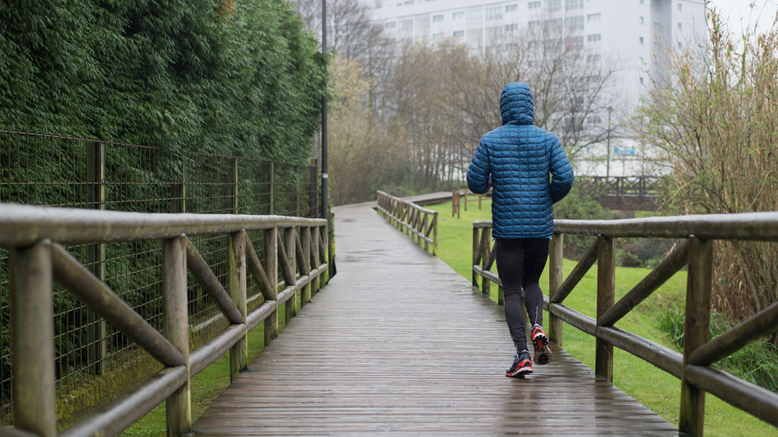The weather outside is frightful, but a run would be so delightful. If you’ve been training all summer and aren’t really certain how you’re going to get through the winter, here are some tips for you to run in the cold.
Run In The Cold
1. Dress For The Weather
This doesn't mean dress like you're just gonna sit outside, neck deep in snow. When running in the cold, dress to a temperature about 10-20 degrees F higher than what the current temperature and wind chill are. Why? Because you’ll be generating a lot of body heat. Once you get up to higher speeds, your body, no matter what the temperature is outside, will generate heat that'll keep you warming. That means you'll be sweating a lot and on a cold day, you don't want that. Dressing for that higher temperature will make it easier to do the following:
2. Stay Dry
Staying dry is really important when you run in the cold. As the temperature approaches, reaches, and then dips below freezing, your sweat won’t stay liquid. Everything that doesn't instantly evaporate will freeze wherever it can, and that means on your skin. Remember, your body perspires in order to cool your internal body temperature. Unlike snakes, our body temperatures don't go up and down with the weather. So even though it's 40 outside, your body still tries to keep that nice 98.6F.
Your best best is to layer up. Wear water-wicking clothes that are thin and you can layer. That's your best bet. If you start getting uncomfortably warm, you can take off that top layer and wrap it around your waist. The other layers underneath will keep you insulated. More importantly, if you do decide to slow down, you can always throw that other layer back on when you start getting colder. Wool is great for insulation, since even if it’s wet it will still insulate you.
3. Warm Up Outside
There are a bunch of reasons to warm-up outside, even if it's cold. You step outside and you start shivering. But it's better to walk outside and be dry than walk outside and be dripping sweat (or even have a light sheen). Warming up inside can definitely make your warm up more comfortable, but it does two things you don't want to happen. First, you'll generate a bunch of sweat (see #2 for why that's a bad idea). Second, your body will naturally open its pores and flood your skin with blood as a means to release heat. Suddenly you step outside, are blasted by cold dry air, and you become Frosty the Snowman. Trust me, warm-up outside. Because of how the human body reacts to the cold, your warm up needs to be a little more conservative and you'll want do it for a little bit longer.
4. Hydrate!
Water is important, even when you run in the cold. An insulated bottle of warm water will be useful to you on a cold running day. Have no doubts about it, you will sweat, especially in the cold, dry air (you do lose water, even when just breathing). Therefore, having some water with you is important.
5. Run Away From The Wind
Hydration, layering, warming up outside, all of these things come together because of one thing: the cold wind. When you run, even on a still day, air is moving past you removing moisture from your body and cooling you down. If you can, run in a direction perpendicular to the wind because while running with the wind on your back will make you nice and sweaty, running into the wind will cool you down pretty heavily. If you must run in the wind, start your runs into the wind and finish the run with the wind at your back. If you do this the other way around and you end up walking, you’re significantly increasing your chances of catching frostbite.
6. Run Just A Little Less
Your body’s reaction time is slower in the cold, and it’s important not to overtax yourself on your runs. Speed work should be kept to a minimum, because if you tire yourself out and find yourself walking back home, you stop generating the body heat necessary to keep homeostasis and that's when you open yourself up to frostbite or hypothermia. Also, because your muscles are twitching just a little bit slower, it is important to slow it down just so you don’t injure yourself on that patch of ice you missed, or your gait changes suddenly and you can't move fast enough to catch yourself from falling.
So now that you know some of the basics for running in the cold, thaw out those trainers and hit the path with confidence.















